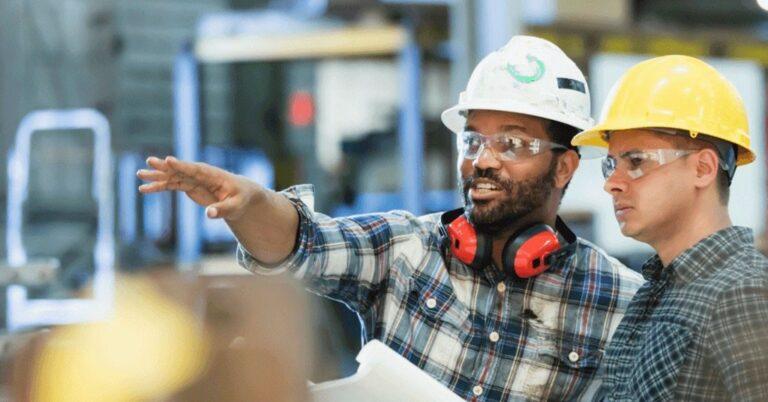Introduction to Finding the Right Manufacturing Facilities
As your business grows, you’ll eventually need to scale your manufacturing capacity. This can be a daunting task, as there are many things to consider when choosing a suitable manufacturing facility. Here are a few tips to help you find the right facility for your business:
1. Consider your production needs. You’ll need to determine how much space you need, what type of equipment you’ll need and how many employees you’ll need to staff the facility.
2. Research different facilities. Once you know what you’re looking for, start researching different manufacturing facilities. Make sure to visit each facility and speak with the staff to get a feel for the environment and see if it’s a good fit for your business.
3. Negotiate terms. Once you’ve found a few potential facilities, it’s time to start negotiating terms. Make sure you understand all of the costs involved so there are no surprises down the road.
4. Apply for manufacturing loans. Most businesses don’t have the capital handy to invest in new manufacturing facilities upfront, especially if there are already other rising costs while you’re in a growth phase. Manufacturing loans can mitigate the issue by providing up to R6 million in funding within 24 hours to ensure you don’t miss out on an opportunity to secure a new factory.
5. Sign a contract. Once you’ve found the perfect manufacturing facility and negotiated terms, it’s time to sign a contract. This will protect both parties and ensure that everyone is on the same page moving forward.
Factors to Consider When Choosing a Facility
The decision of where to manufacture your product is a vital one for the growth and success of your business. There are many factors to consider when choosing a facility, including:
1. Location.
The first thing to consider is the location of the facility. It should be close to your customers and suppliers and in an area with a skilled labour force.
2. Size
Make sure the facility is large enough to accommodate your current and future needs. You don’t want to outgrow the space too quickly.
3. Infrastructure
The infrastructure of the facility is important, too. There should be enough power and water supply, and the building itself should be in good condition.
4. Equipment
The equipment in the facility should be appropriate for your manufacturing process. It should also be well-maintained and up-to-date.
5. Safety standards
The facility should meet all safety standards, including those set by OSHA (Occupational Safety and Health Administration).
6. Environmental regulations
The facility should also comply with all environmental regulations, such as those regarding air pollution and wastewater discharge.
7. Capabilities
Can the factory produce what you need at the volumes you require? Do they have experience with your type of product? What types of materials and components do they work with?
8. Certifications and quality control
Does the facility meet all relevant safety and quality standards? Are they certified by any relevant third parties? Do they have a robust quality control process in place?
9. Production capacity and scalability
Can the factory handle your current production needs as well as future growth? Do they have room to expand if needed?
10. Lead times and delivery
Can the factory meet your desired lead times? Are they located in a convenient shipping location? Do they have experience shipping internationally if needed?
11. Cost
Is the pricing align with your budget? Are there any hidden costs or fees that could increase your total cost of ownership down the road?
12. Financing options
Does the factory offer any financing options or flexible payment terms that could help with cash flow management? If not, make sure you are in a good place to be able to apply for manufacturing loans that can help you manage your cash flow.
13. Customer service
How responsive is the team at the facility? Do they seem interested in developing a long-term relationship with you? Do they seem like they would be easy to work with on a day-to-day basis?
Cost Benefits to Working with the Right Manufacturing Facility
There are a number of cost benefits that come with working with the right manufacturing facility for your business. One of the biggest benefits is that you can avoid the high costs associated with poor quality control. When you work with a reputable and experienced manufacturer, they will have systems in place to ensure that your products are consistently high quality. This can save you a lot of money in the long run, as you won’t have to waste money on defective products or product recalls.
Another cost benefit of working with the right manufacturing facility is that you can be sure that your products will be made on time and to your specifications. A good manufacturer will have a clear understanding of your production schedule and requirements, and will do everything possible to meet your deadlines. This can help you avoid costly delays in your supply chain, and keep your customers happy.
Finally, working with the right manufacturing facility can help you reduce your overall production costs. A good manufacturer will use efficient production methods and purchase quality materials at competitive prices. This can help save you money on your overall manufacturing costs, allowing you to invest more in other areas of your business.
What to Avoid When Considering Factories
There are a few key things to avoid when considering factories:
1. Don’t choose a factory based solely on price. It’s important to consider other factors such as quality, reputation, and capabilities.
2. Avoid factories that are located in areas with political instability or poor infrastructure. This can lead to disruptions in the supply chain and potentially higher costs.
3. Be cautious of factories that have a history of environmental violations. This could lead to costly compliance issues down the road.
4. Make sure you visit the factory and meet with the management team before making any decisions. This will give you a better idea of the culture and working conditions at the facility.
5. Check the working conditions. One of the most important things to look out for is poor working conditions or practices. Working conditions and practices can make or break a manufacturing facility. Poor working conditions can lead to employee dissatisfaction, higher turnover rates, and decreased productivity. And when it comes to practices, you want to make sure that the facility you choose has a good track record of quality control and safety.
6. Be wary of weak safety protocols. In order to ensure that your products are manufactured safely and correctly, it is important to partner with a facility that takes safety seriously. Unfortunately, not all manufacturing facilities have adequate safety standards and procedures in place. Here are some red flags to watch out for:
– Lack of proper safety equipment: A good manufacturing facility will have the proper safety equipment for their employees, including things like PPE, first aid kits, and fire extinguishers.
– Poorly maintained equipment: Another sign of a lack of care for employee safety is poorly maintained equipment. This can lead to accidents and injuries.
– Unsafe working conditions: If the facility you’re considering doing business with has unsanitary or unsafe working conditions, it’s a major red flag. This could put your employees at risk of injury or illness.
If you see any of these warning signs, it’s best to avoid doing business with that particular manufacturing facility. Your employees’ safety is always worth more than a lower price tag.
Conclusion
In conclusion, finding the right manufacturing facility for your business is a daunting task that requires careful planning and research. You must ensure that you make an informed choice by scrutinizing factors such as quality control processes, turnaround times, pricing structures, and customer service. Additionally, it’s essential to visit facilities in person to see if they are the right fit logistically as well as aesthetically. By taking all of these action steps before settling on a final decision, you can maximize the success of your business.





